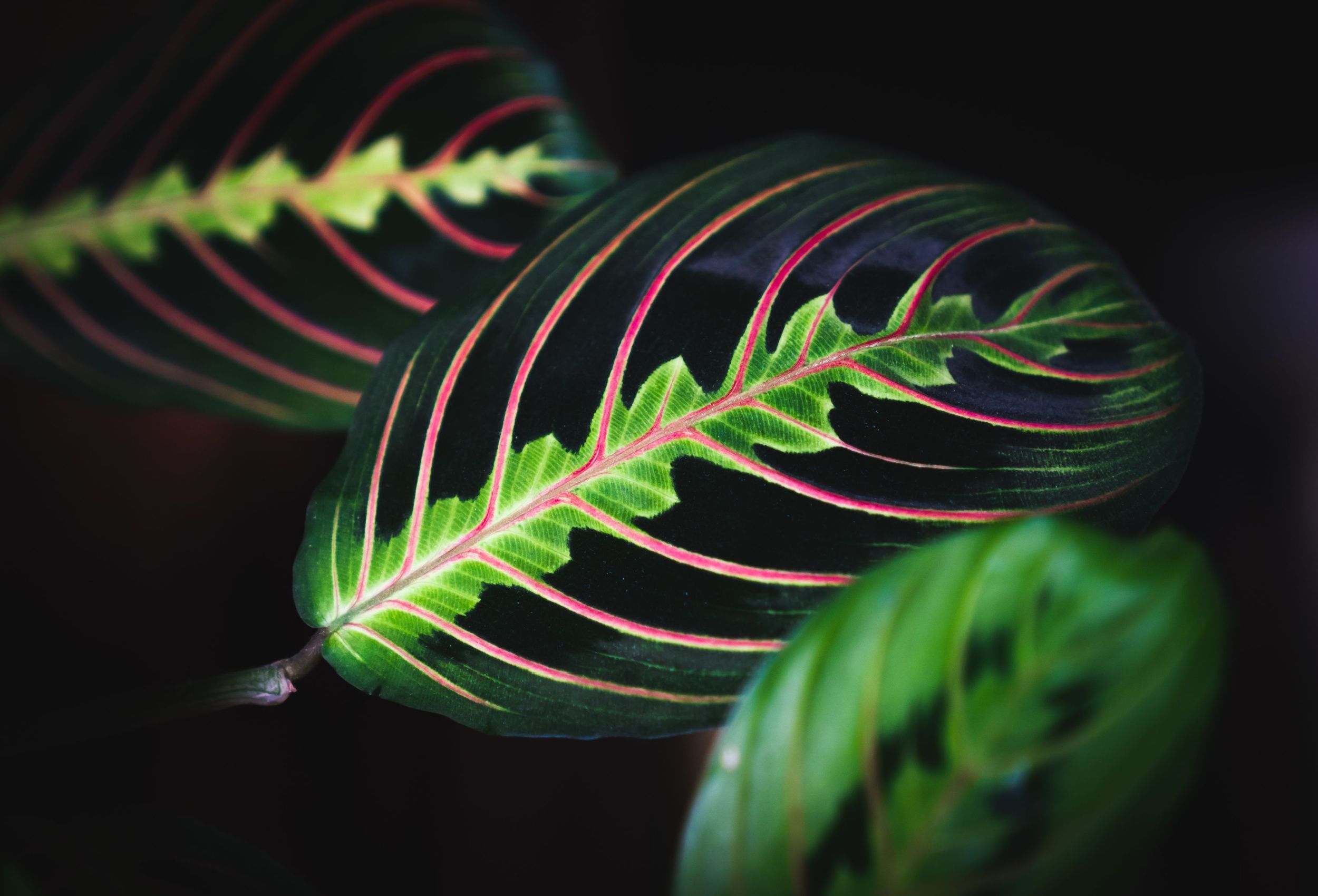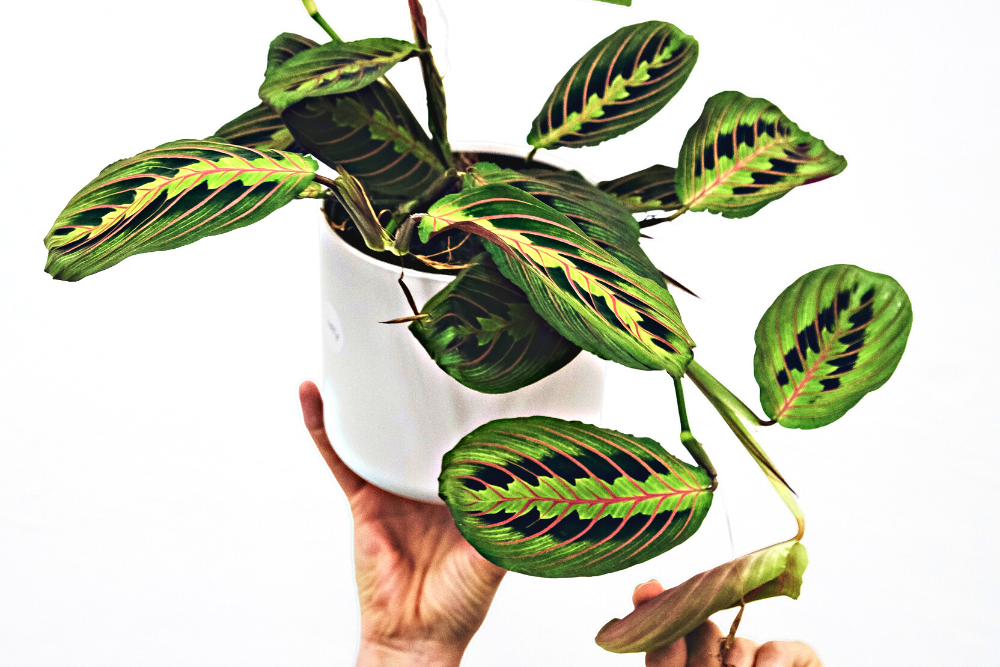Did you know that some plants can close their leaves at night? The prayer plant (Maranta leuconeura) has fascinated botanists for centuries with its unique ability to mimic nightly prayers and sleep cycles. Their dramatic effect of raising, folding, and closing the leaves during the evening has captivated many -- but what makes these unusual plants do this?
Below you’ll find the fascinating science behind why prayer plants close at night, how to care for them, and how even a little plant can make all the difference in your home!
Why Do Prayer Plants Close Their Leaves at Night
Image credit: Feey via Unsplash
Many people with prayer plants experience this movement and wonder why it occurs. There are actually several potential reasons a prayer plant would close up in the dark.
Nyctinasty
Nyctinasty refers to movements that occur because of the lessening of light as the day turns into night. Darkness may trigger the closing of these leaves, as it serves to protect photosynthesizing tissue from harm caused by a lack of light.
While prayer plants may appear to have a routine for when their leaves close and open up each day, this phenomenon is actually an adaptation from nature that helps keep its cells safe from damage.
Although this idea is the most accepted explanation, reports suggest other factors that have contradicted it.
Insect Protection
While diseases and infections are rare among these plants, pests such as mealybugs, aphids, and spider mites can still be a problem. Closing their leaves helps protect them from pesky insects which may feed on the leaves and cause harm to the plant. By closing up when they sense unsafe conditions outside, prayer plants maximize their chances of survival against these common insect threats.
Although, this curious phenomenon has been the topic of debate among gardeners for years. Because spider mites are active at night, but aphids are active during the day, this may not be the best justification for why the prayer plant closes its leaves at night.
Reducing Leaf Moisture
This adaptation may help prayer plants survive and thrive in tropical environments where high humidity can be an issue. By folding up their leaves, prayer plants can decrease the surface area exposed, reducing the chances of evening dew forming and damaging their delicate foliage.
Furthermore, this behavior also reduces the risk of disease caused by excessive leaf wetness or damp conditions. With these special adaptations, prayer plants can take advantage of the warm and humid climate while avoiding potential pitfalls.
How Does All This Work?
Image credits: Maritxu via Shutterstock
The secret behind prayer plants’ circadian rhythm lies in their pulvinus, a motor organ at the base of each leaf. This unique structure helps regulate turgor pressure inside cells, which allows prayer plants to respond to changes in light.
During the day when light is strong, water pressure builds up as these cells absorb more and more moisture. As darkness falls and light weakens, water pressure decreases -- causing the cells to relax back into their original shape. This relaxation then causes the leaves to curl and close up for the night.
How to Care for Your Prayer Plant
Image credits: Shadow Inspiration via Shutterstock
Caring for the prayer plant isn’t difficult, but there are some things you should know before you start. Here are some tips on how to care for your prayer plant.
Choose the Right Spot
Prayer plants prefer partial shade, so choose a location in your home that receives a few hours of filtered sun each day without being directly exposed to strong sunlight. Too much sun can dull their coloring.
Water When the Soil is Dry
Keep your prayer plant’s soil moist but not soggy, particularly during the warmer months. Water thoroughly with tepid water and then allow the top inch of potting mix to dry out before watering again. In wintertime, reduce watering frequency so that the soil slightly dries out between sessions.
Because prayer plants are sensitive to chloramine and chlorine, avoid using tap water. Using filtered, distilled, or rainwater is preferable.
Humidity Needs
The prayer plant loves humidity, so increase humidity levels by regularly misting its leaves with lukewarm water. You can also place a humidifier nearby or add a pebble tray filled to create an additional layer of moisture in the air surrounding your plant. Note: Do not use hard water, as this could leave deposits on the leaves.
Alternatively, you can group your humidity-loving plants together to create a microenvironment for your plant to thrive in.
Temperature
To keep your plant happy and healthy, provide an environment with temperatures between 65 and 70 degrees Fahrenheit.
Additionally, never allow the temperature to dip below 55 degrees Fahrenheit, as this could harm the plant. Once you have a comfortable temperature range established, be aware of humidity levels. The higher the temperature gets above 60 degrees Fahrenheit, the more humidity your prayer plant will need.
Avoid placing them near air conditioning vents or radiators as they don’t like extreme temperatures.
Fertilizing
Feed every two weeks from March through September with a standard liquid fertilizer tailored for houseplants. Be careful not to overfeed!
In Summary
Prayer plants are a unique and beautiful addition to your home. Be sure to check out a time-lapse video of a prayer plant closing its leaves or set up your own. This fascinating occurrence goes to show you that even the simplest things in life can be amazing!
If you want to know more about prayer plants or how to care for them, leave a comment below. In the meantime, share this post with your family and friends and let them marvel at the wonders of nature too!


